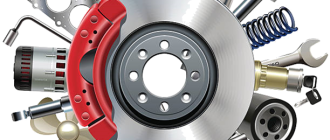
Our Safety Guide to Autumn Driving This Season
Welcome to our comprehensive guide for navigating the roads during this autumn season, where unpredictable weather and hazardous conditions can present unique challenges to drivers. Safety should always be our top priority, and this guide aims to provide you with the knowledge and tips you need to ensure a safe and enjoyable driving experience during this beautiful but potentially treacherous time of year.
Autumn is known for its stunning foliage and cooler temperatures, but it also brings rain, fog, and shorter daylight hours. These factors can significantly impact visibility and road conditions, making it essential for drivers to exercise caution and adjust their driving habits accordingly. By following the advice and suggestions outlined in this guide, you can proactively prepare for the potential risks and ensure a smooth journey on the roads.
Throughout this guide, you will find practical tips on how to prepare your vehicle for autumn driving, how to deal with slippery roads, how to navigate through thick fog, and how to stay safe during rainy weather. We will also cover critical topics such as safe braking techniques, maintaining a safe distance from other vehicles, and the importance of staying alert and focused behind the wheel.
Remember, even the most experienced drivers can encounter unexpected situations on the road during autumn. By equipping yourself with the right information and adopting safe driving practices, you can confidently navigate this potentially challenging season and enjoy the beautiful scenery it has to offer. Let’s embark on this autumn driving guide together and make safety our utmost priority!
Tips for Safe Driving in Autumn
As the season changes and autumn sets in, it is important to be aware of the unique driving challenges that come with this time of year. Follow our guide to ensure your safety on the road.
- Be mindful of wet leaves: Wet leaves on the road can be just as slippery as ice. Reduce your speed and be cautious when driving over them.
- Watch out for fog: Autumn is notorious for foggy mornings and evenings. Use your fog lights when needed and keep a safe distance from other vehicles.
- Prepare for changing weather conditions: Autumn weather can be unpredictable. Ensure your vehicle is equipped with good tires, working windshield wipers, and proper lighting.
- Be aware of reduced visibility: With shorter days and longer nights, visibility can be a challenge. Keep your headlights on and use defoggers to maintain a clear view of the road.
- Look out for wildlife: Autumn is mating season for many animals, leading them to be more active near roadways. Stay vigilant and be prepared to safely brake or swerve if necessary.
- Be cautious around school buses: With the start of the school year, be cautious around school buses and be aware of the designated bus stops.
- Keep a safe following distance: Increase your following distance to at least three seconds in wet or slippery road conditions. This will give you more time to react to any sudden stops or obstacles.
- Watch for fallen branches or debris: Strong winds and storms in autumn can cause branches, leaves, and other debris to fall onto the road. Scan the road ahead and be prepared to safely maneuver around them.
Remember, safety should always be your top priority, especially when driving during this season. Familiarize yourself with these tips and share them with others to promote safer driving in autumn.
Prepare Your Vehicle for Autumn
As autumn approaches, it’s essential to ensure that your vehicle is ready for the change in weather conditions. Taking the time to prepare your car now can prevent potential safety issues while driving in the coming months. Follow our guide below to make sure you are fully equipped for autumn driving:
- Check your tires: As the weather begins to cool down, it’s crucial to inspect your tires for wear and tear. Check the tread depth and ensure that the tires are properly inflated to improve traction on wet and slippery roads.
- Inspect your brakes: Autumn brings unpredictable weather conditions that may require sudden and frequent braking. Have your brake pads, rotors, and calipers checked by a professional to ensure they are in good condition.
- Replace your wiper blades: Falling leaves and increased rain during autumn can impair your visibility on the road. Replace your worn-out wiper blades with new ones to ensure clear visibility, especially during heavy downpours.
- Top up your fluids: Ensure that your vehicle’s fluids, such as engine oil, coolant, and windshield washer fluid, are at their recommended levels. This will help your car perform optimally and prevent any damage caused by inadequate fluid levels.
- Check your battery: Cold weather can put additional strain on an aging battery. Get your battery tested to ensure it is strong enough to handle the colder temperatures in autumn. Replace it if necessary to avoid any unexpected breakdowns.
- Inspect your lights: With shorter days and longer nights, it’s essential to have properly functioning headlights, taillights, and indicators. Clean the lenses and check that all bulbs are working correctly to maintain optimum visibility on the road.
- Prepare an emergency kit: It’s always a good idea to have an emergency kit in your vehicle, especially during the autumn season. Include items such as a first aid kit, flashlight, blanket, bottled water, and non-perishable snacks. These items can be invaluable if you experience a breakdown or get stranded during inclement weather.
- Stay informed: Keep an eye on weather forecasts and road condition updates to stay ahead of any potential hazards. Check local news or use a reputable weather app to receive real-time updates and make necessary adjustments to your travel plans.
By following these tips, you can ensure your vehicle is in top condition for autumn driving. Remember, prioritizing safety on the road is the key to a pleasant and accident-free journey!
Check Your Tires Before Hitting the Road
As the autumn season approaches, it’s important to ensure that your vehicle is ready for the changing weather conditions. One crucial aspect of road safety is checking your tires before embarking on any driving adventures. Our guide will help you ensure that your tires are in top shape.
Regular Inspection: The first step in tire maintenance is conducting regular inspections. Look for any signs of wear and tear such as cracks, bulges, or uneven tread wear. It’s also important to check the tire pressure regularly to ensure they are properly inflated.
Tire Pressure: Proper tire pressure is essential for safe driving. Underinflated tires can cause poor handling and decreased fuel efficiency, while overinflated tires can lead to reduced traction and a rough ride. Refer to your vehicle’s manual or the sticker inside the driver’s door jamb for the manufacturer’s recommended tire pressure.
Tread Depth: Good tire tread is crucial for traction, especially on wet or slippery roads. To check your tire’s tread depth, you can use a penny or a tread depth gauge. Insert the penny into the tread groove with Lincoln’s head upside down. If you can see all of Lincoln’s head, it’s time to replace your tires.
Rotation and Alignment: Regular tire rotation and alignment are important for even tread wear and prolonging the life of your tires. Ideally, tires should be rotated every 5,000 to 7,000 miles or as recommended by your vehicle’s manufacturer.
Emergency Kit: It’s always a good idea to keep an emergency kit in your vehicle, especially during this season. This kit should include a spare tire, jack, lug wrench, and a tire patch kit. It’s also advisable to keep a flashlight, reflective triangle, and gloves for safety.
Conclusion: Before hitting the road this autumn, make sure to check your tires for safety. Regular inspections, monitoring tire pressure, checking tread depth, and maintaining proper rotation and alignment will help you stay safe on the road. Don’t forget to pack an emergency kit in case of any unforeseen circumstances. Safe travels!
Be Aware of Changing Road Conditions
Autumn is a beautiful and picturesque season, but it also brings its fair share of challenges for drivers. The changing weather and road conditions can make driving more hazardous, so it’s important to be aware and prepared for these changes.
As the leaves start to fall, they can create a slippery and wet surface on the roads. This can make it more difficult to brake and maneuver your vehicle, so it’s important to adjust your driving accordingly. Drive at a slower speed and increase the distance between you and the car in front of you to allow for more stopping time.
Furthermore, autumn is also known for the unpredictable weather, with rain, fog, and even frost making their appearances. It’s crucial to drive with caution and be prepared for these types of weather conditions. Make sure your windshield wipers are in good working condition and have enough windshield washer fluid to maintain proper visibility. Keep your lights on to ensure other drivers can see you, and use your fog lights when necessary.
In addition to the changing weather, autumn also brings shorter daylight hours. It’s important to be aware of the reduced visibility and adjust your driving habits accordingly. Use your headlights even during the day to increase your visibility to other drivers, and be attentive to pedestrians and cyclists who may be harder to see.
It’s also worth noting that with the arrival of autumn, wildlife becomes more active. Be prepared for encounters with animals on the road, especially around dawn and dusk when they are more likely to be out and about. Stay alert and be prepared to slow down or stop if necessary.
In conclusion, autumn may be a beautiful season, but it also brings changes in road conditions that can affect your safety. By being aware of and prepared for these changes, you can ensure a safer driving experience. Follow our guide and take appropriate precautions to stay safe on the road during this season.
Use Proper Lighting and Visibility
When driving in the autumn, it’s important to prioritize your safety. This guide provides you with valuable tips and tricks to ensure your safety on the road during this season.
- Check your lights: With shorter days and longer nights, proper lighting is crucial. Regularly check your headlights, taillights, and turn signals to make sure they are working correctly.
- Turn on your lights: Always turn on your lights when driving in low-light conditions, such as in the morning or evening, or when visibility is reduced due to rain, fog, or falling leaves.
- Adjust your headlights: Make sure your headlights are properly aligned so that they effectively illuminate the road ahead without blinding other drivers. You can check and adjust your headlights yourself or visit a professional if needed.
- Use high beams wisely: While driving on dark roads with no oncoming traffic, you can use your high beams to enhance your visibility. However, remember to dim them when approaching other vehicles to avoid causing discomfort or temporary blindness to other drivers.
- Clean your windshield and mirrors: Clear visibility is essential for safe driving. Regularly clean your windshield, windows, and mirrors both inside and outside to remove any dirt, dust, or debris that may obstruct your view.
- Replace worn-out wiper blades: Worn-out wiper blades can reduce visibility, especially during rain or snow. Replace them regularly to ensure they effectively clear your windshield.
- De-fog your windows: Use your vehicle’s defrost setting to clear foggy windows. Additionally, avoid using your hands to wipe fog off the windows, as this can further impair visibility.
- Be cautious in glare conditions: Sun glare can be intense during autumn, especially during sunrise and sunset. Keep a pair of sunglasses in your vehicle and use your sun visor to reduce glare and maintain clear visibility.
- Be aware of pedestrians and cyclists: As the days become shorter, more pedestrians and cyclists are likely to be on the roads. Stay vigilant and watch out for them, especially in low-light conditions.
- Follow the rules of the road: Finally, always remember to follow the rules of the road, including speed limits and traffic signals. Being a responsible driver contributes to the safety of everyone on the road.
By following these tips for proper lighting and visibility, you can ensure a safer driving experience this autumn.
How to Safely Drive in Rainy Weather
Rainy weather can create challenging driving conditions, especially during the autumn season. It’s important to know how to navigate the roads safely to protect yourself and others. In this guide, we will provide you with essential tips and precautions to ensure your safety while driving in the rain.
1. Slow Down and Keep a Safe Distance
Rain makes the road slippery, reducing traction and increasing the braking distance. To compensate for this, reduce your speed and maintain a safe distance from the vehicle in front of you. This will give you enough time to react and stop if needed.
2. Use Your Headlights
Visibility can be significantly decreased during rainy weather. Always turn on your headlights to help you see the road ahead and make yourself more visible to other drivers.
3. Beware of Hydroplaning
Hydroplaning occurs when your tires lose contact with the road due to water buildup. To avoid hydroplaning, drive at a moderate speed and avoid sudden braking or acceleration. If you do start hydroplaning, ease off the gas and steer gently in the direction you want to go.
4. Defog Your Windows
Rainy weather can cause condensation to build up on your windows, reducing visibility. Make sure to use your defogger and windshield wipers to keep your windows clear and maintain good visibility.
5. Avoid Sudden Maneuvers
Rainy conditions can make the road slippery, making it important to avoid sudden turns, lane changes, or sharp braking. These sudden maneuvers can cause your vehicle to lose control and lead to accidents.
6. Stay Updated and Plan Ahead
Check the weather conditions and traffic updates before your journey. This will help you plan your route accordingly and be aware of any road closures or diversions due to heavy rain or flooding.
7. Maintain Your Vehicle
Proper vehicle maintenance is crucial for safe driving in any weather condition. Make sure your tires have sufficient tread depth and are properly inflated. Also, check your brakes and windshield wipers regularly to ensure they are in good working condition.
By following the safety guide mentioned above, you can reduce the risks associated with driving in rainy weather during the autumn season. Remember to always prioritize safety and be cautious on the road for a smooth and accident-free drive.
Dealing with Fog and Low Visibility
Foggy conditions are common during the autumn season, which can significantly reduce visibility on the road. In order to ensure your safety and the safety of others, follow our guide on how to deal with fog and low visibility while driving.
- Use your fog lights: When encountering foggy conditions, always use your fog lights. These lights are lower than the regular headlights and are specifically designed to cut through fog and improve visibility.
- Slow down: Reduce your speed and maintain a safe following distance. Fog can make it difficult to judge distances, so it’s crucial to leave enough space between your vehicle and the one in front of you.
- Turn on your windshield wipers: Fog can cause moisture to accumulate on your windshield, reducing visibility even further. Make sure to turn on your windshield wipers to keep the glass clear.
- Avoid sudden maneuvers: Fog can disorient drivers, so it’s important to drive smoothly and avoid sudden maneuvers such as hard braking or abrupt lane changes. Signal early and give other drivers plenty of notice before making any turns or lane changes.
- Use road markings and guideposts: When visibility is limited, use road markings and guideposts to stay on the correct path. Pay attention to the reflective markers and lines on the road to help you maintain your lane.
- Stay focused: Keep your attention fully on the road and avoid distractions. Avoid using your phone or engaging in any other activities that may divert your attention away from driving.
Remember, your safety and the safety of others should always be the top priority. By following these tips, you can navigate through foggy conditions with ease and ensure a safe journey during the autumn season.
Watch Out for Wildlife on the Roads
Autumn is a beautiful season, with its vibrant colors and cool breeze. However, this time of year also brings some unique challenges when it comes to driving. One of the biggest concerns is encountering wildlife on the roads. With their natural habitats changing and mating season in full swing, animals are more active and unpredictable. To help you stay safe on your autumn drives, we have compiled a guide on how to watch out for wildlife.
Know the Common Hotspots
Some areas are more prone to wildlife crossings, so it’s essential to be aware of these common hotspots and adjust your driving accordingly. Look out for signs indicating animal crossings or areas with high populations of specific animals. Keeping an eye on these areas can give you a heads up and allow you to slow down and be more cautious.
Pay Attention to the Time of Day
Wildlife is generally more active during dawn and dusk. These are the times when animals are most likely to venture onto the roads. It’s crucial to be extra vigilant during these periods and drive at a reduced speed. Also, be mindful of your surroundings and use your high beam headlights when it’s safe to do so, as they can help detect animals on the side of the road.
Stay Alert and Avoid Distractions
Distracted driving is dangerous, especially when it comes to wildlife encounters. Avoid using your phone or engaging in any activities that take your attention away from the road. Keep your focus on scanning the surroundings and anticipate any sudden movements or signs of wildlife.
Use Defensive Driving Techniques
To minimize the risk of collision with wildlife, practice defensive driving techniques. Maintain a safe distance from the vehicle in front of you, as this gives you more time to react to any sudden wildlife appearances. Also, remember to scan the sides of the road and use your peripheral vision to spot animals that may be partially hidden.

Know How to React
If you encounter wildlife on the road, it’s essential to know how to react appropriately. Do not swerve or make any sudden movements that could result in losing control of your vehicle. Instead, firmly brake and stay in your lane, honking your horn to scare the animal away. Remember that it’s safer to hit the animal than to put yourself and other drivers at risk by making drastic maneuvers.
Report Any Roadkill
If you come across roadkill, it’s important to report it to the appropriate authorities. This helps them monitor wildlife patterns and identify hotspot areas where interventions such as fencing or warning signs may be warranted. Reporting roadkill can contribute to creating a safer environment for both drivers and animals.
By following these safety tips and being aware of the increased wildlife activity during autumn, you can have a safe and enjoyable driving experience. Stay alert, be prepared, and watch out for wildlife on the roads!
Driving in Heavy Traffic: Safety Tips
As the autumn season arrives, it is important to stay safe on the road. This guide provides essential safety tips for driving in heavy traffic during this time of year.
- Plan Ahead: Before getting on the road, make sure to plan your route in advance. Check for any road closures or construction that may affect your journey. This will help you avoid unnecessary delays and frustration.
- Stay Focused: When driving in heavy traffic, it is crucial to stay focused on the road. Avoid any distractions, such as texting or using your phone, as they can increase the risk of accidents.
- Maintain a Safe Distance: Keep a safe distance from the vehicle in front of you. This will provide you with enough time to react and brake if necessary. The general rule of thumb is to maintain a distance of at least two seconds between your car and the car in front of you.
- Use Your Signals: Indicate your intentions by using your turn signals. This will help other drivers anticipate your moves and prevent any sudden lane changes or turns.
- Be Patient: Traffic jams can be frustrating, but it is important to remain patient. Avoid aggressive driving behaviors and try to stay calm. Remember, everyone is in the same situation.
- Be Aware of Blind Spots: Before changing lanes, always check your blind spots. Use your mirrors and shoulder-check to ensure that there are no vehicles in your blind spots. This will help prevent potential accidents.
- Observe Speed Limit: In heavy traffic, it is essential to obey the speed limit. Excessive speeding can lead to accidents and endanger the lives of others on the road. Slow down, and always drive at a safe and appropriate speed.
- Watch for Pedestrians: Pay extra attention to pedestrians during heavy traffic. Be mindful of crosswalks and intersections, and always yield to pedestrians who have the right of way.
- Stay Informed: Stay updated with local traffic and weather conditions. Listen to traffic reports or use navigation apps that provide real-time information. This can help you avoid congested areas or detours.
Remember, driving in heavy traffic during the autumn season can be challenging. However, by following these safety tips, you can ensure a smoother and safer driving experience.
What to Do in Case of an Accident
Accidents can happen at any time, and it’s important to know what steps to take to ensure your safety and the safety of others involved. In this section, we will outline the actions you should take if you find yourself in an accident during the autumn driving season.
- Stay Calm and Assess the Situation: In the event of an accident, it’s crucial to stay calm and assess the situation. Check yourself and your passengers for injuries, and if possible, move your vehicle to a safe location away from traffic.
- Call Emergency Services: If there are serious injuries or significant damage to the vehicles, call emergency services immediately. Provide them with accurate and detailed information about the accident, including your location.
- Exchange Information: After ensuring everyone’s safety, exchange information with the other parties involved. This includes names, phone numbers, license plate numbers, insurance details, and driver’s license information. Also, try to gather contact information from any witnesses.
- Document the Scene: Take pictures of the accident scene, including any damages to the vehicles and the surrounding area. This documentation can be useful when filing insurance claims or if legal action becomes necessary.
- File an Accident Report: In some cases, it may be necessary to file an accident report with the police. This report will provide an official record of the incident and may be required by your insurance company.
- Notify Your Insurance Company: Contact your insurance company as soon as possible to report the accident. Provide them with all the necessary details and follow their instructions for filing a claim.
- Seek Medical Attention: Even if you don’t initially feel injured, it’s essential to seek medical attention after an accident. Some injuries may not be immediately apparent but could become more serious if left untreated.
- Cooperate with Authorities: Cooperate fully with the police and any other authorities on the scene. Answer their questions honestly and provide any requested documentation.
- Follow Up with Your Insurance Company: Stay in contact with your insurance company throughout the claims process. Provide any additional information or documentation they request promptly.
Remember, safety should always be your top priority. By following these steps and taking the necessary precautions, you can navigate the autumn driving season with confidence and minimize the potential impact of an accident.
Protect Yourself from Distracted Driving
Distracted driving is a major concern during the autumn season, as the shorter daylight hours and changing weather conditions can increase the risk of accidents on the road. To ensure your safety and the safety of others while driving this season, it is important to take steps to protect yourself from distractions.
1. Stay focused: When driving, it is crucial to keep your attention on the road at all times. Avoid using your mobile phone or any other electronic device that can distract you. If you need to make a call or send a text message, pull over to a safe location.
2. Avoid multitasking: Trying to do other tasks while driving, such as eating, grooming, or using GPS devices, can divert your attention from the road. Complete these tasks before or after your trip, or find a safe place to pull over if necessary.
3. Manage your passengers: Having passengers in the car can be distracting, especially if they are causing a disturbance. Establish ground rules for your car and ask your passengers to refrain from activities that may distract you, such as playing loud music or engaging in animated conversations.
4. Prepare for your journey: Before setting off on a drive, make sure you have everything you need within reach, such as snacks and drinks. Adjust your seat, mirrors, and temperature controls before hitting the road to minimize distractions while driving.
5. Plan your route: Familiarize yourself with the route you will be taking and set your GPS or navigation system accordingly. This will help you stay focused on the road and reduce the chances of distracted driving caused by trying to find your way.
6. Practice defensive driving: Being aware of other drivers on the road and anticipating their actions can help you react in time to avoid accidents. Pay attention to the behavior of other drivers and maintain a safe distance from them, allowing you more time to react if necessary.
7. Take breaks: Long drives can be tiring, leading to decreased focus and attentiveness. To combat this, plan regular breaks during your journey to rest and recharge. Use these breaks to stretch your legs, grab a snack, or simply relax before continuing your drive.
Remember: Your safety and the safety of others on the road should always be a top priority. By following these tips and staying focused while driving, you can protect yourself from distractions and ensure a safe and enjoyable autumn driving experience.
Avoid Driving Under the Influence
Safety is our top priority on the roads, especially during the autumn season. As part of this driving guide, we want to emphasize the importance of avoiding driving under the influence.
Driving under the influence of alcohol or drugs can impair judgment, reaction time, and coordination, increasing the risk of accidents. To ensure your safety and the safety of others on the road, it is crucial to stay away from driving if you are under the influence of any substances.
Here are some tips to help you avoid driving under the influence:
- Plan your transportation in advance: If you know you will be attending an event where alcohol will be served, plan your transportation options ahead of time. Arrange for a designated driver, use public transportation, or consider a ridesharing service.
- Offer to be a designated driver: Be a responsible friend or family member by offering to be the designated driver. This way, you can ensure everyone gets home safely.
- Know your limits: Be aware of your own alcohol tolerance and know when it is not safe for you to drive. Even if you feel fine, impaired judgment can make you overestimate your abilities.
- Use alternative transportation: If you find yourself under the influence of alcohol or drugs and without a safe way to get home, consider alternative transportation methods, such as calling a taxi or using a sober ride program.
Remember, driving under the influence is not only dangerous but also illegal in most places. Stay safe and protect yourself and others by making responsible choices and avoiding impaired driving.
Importance of Regular Vehicle Maintenance
Regular vehicle maintenance is crucial, especially during the autumn season, to ensure your safety while driving on the road. By following our guide and performing regular maintenance on your vehicle, you can prevent potential problems and keep your vehicle in optimal condition.
Here are key reasons why regular vehicle maintenance is important:
- Safety: Regular maintenance helps identify and address potential safety issues before they become major problems. This includes checking the brakes, tires, lights, and windshield wipers, which are essential for safe driving in any season.
- Improved Performance: Proper maintenance improves your vehicle’s performance, such as fuel efficiency and engine power. Regularly checking and changing fluids, filters, and spark plugs can help ensure that your vehicle is operating at its best.
- Preventing Breakdowns: Regular maintenance helps prevent unexpected breakdowns and costly repairs. By inspecting and maintaining key components, such as the battery, belts, and hoses, you can reduce the risk of a breakdown and extend the lifespan of your vehicle.
- Preserving Value: Regular maintenance helps preserve the value of your vehicle. When you maintain your vehicle in good condition, it can have a higher resale value in the future.
By following a regular vehicle maintenance schedule, you can ensure that your vehicle is safe, reliable, and performing optimally during the autumn season and beyond.
Planning a Safe Autumn Road Trip
When planning a road trip during this season, it is important to prioritize safety. The autumn season brings unique challenges for drivers, such as changing weather conditions and increased hazards on the road. To ensure a safe and enjoyable trip, follow this guide to stay informed and prepared.
1. Check Your Vehicle
Before embarking on your autumn road trip, make sure to check your vehicle for any potential issues. This includes checking the tires, brakes, lights, windshield wipers, and fluid levels. It is also a good idea to have your vehicle serviced to ensure it is in optimal condition for the journey.
2. Plan Your Route
Planning your route in advance can help you avoid potential road hazards and heavy traffic. Use a reliable navigation system or map to determine the best route and alternate routes if necessary. It is also wise to check for any road closures or construction along your planned route.
3. Pack Emergency Supplies
Prepare for unexpected situations by packing emergency supplies in your vehicle. This may include a first aid kit, flashlight, extra batteries, roadside flares, jumper cables, and a spare tire. It is also a good idea to bring extra blankets, water, and non-perishable snacks in case of emergencies or unexpected delays.
4. Be Prepared for Changing Weather
The autumn season is known for its unpredictable weather, so be prepared for any changes. Pack appropriate clothing and accessories such as jackets, hats, gloves, and umbrellas. It is also important to have an ice scraper and snow brush in your vehicle in case of frost or snow.
5. Take Breaks and Stay Alert
Long drives can be tiring, so make sure to take regular breaks to rest and stretch your legs. Fatigue can decrease your alertness and reaction time, so it is important to stay alert while driving. Avoid distractions such as using your cell phone or eating while behind the wheel.
6. Follow Traffic Laws
Always follow traffic laws and regulations to ensure your safety and the safety of others. Observe speed limits, yield to pedestrians, and use turn signals when changing lanes or making turns. Additionally, be mindful of other drivers and give them plenty of space on the road.
7. Stay Updated on Road Conditions
Stay informed about the current road conditions by listening to local traffic reports or using a smartphone app that provides real-time updates. This will help you anticipate any potential road hazards, traffic jams, or inclement weather warnings along your route.
By following this guide, you can have a safe and memorable autumn road trip. Remember, safety should always be a top priority when driving, and taking the necessary precautions will help ensure a pleasant journey for you and your passengers.
Question-answer:
What are some essential tips for autumn driving?
Some essential tips for autumn driving include keeping your windshield clean, adjusting your speed to the road conditions, and being cautious of wet leaves on the road.
Why is it important to keep your windshield clean during autumn?
It is important to keep your windshield clean during autumn because the low angle of the sun can cause glare and reduce your visibility.
How should I adjust my speed to road conditions?
You should adjust your speed to road conditions by slowing down when it is raining, foggy, or when there are wet leaves on the road. This will help you maintain better control of your vehicle and reduce the risk of accidents.
What should I do if I encounter wet leaves on the road?
If you encounter wet leaves on the road, it is important to remain calm and avoid sudden braking or steering. Instead, gently slow down and maintain a safe following distance from the vehicle in front of you.
What safety precautions should I take when driving in the autumn?
When driving in the autumn, you should take safety precautions such as checking your tire pressure regularly, ensuring your headlights and taillights are in working order, and keeping an emergency kit in your vehicle.





